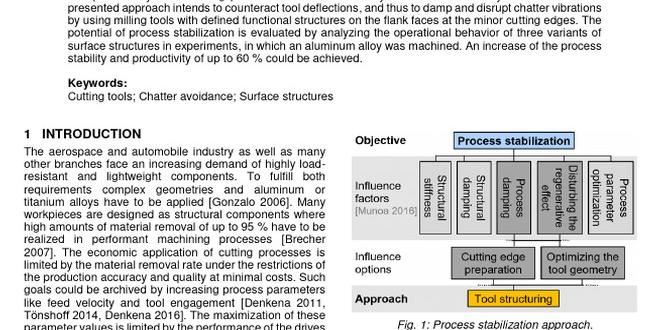A 1/8-inch carbide end mill is a crucial tool for precisely cutting metal and other materials. This guide will help beginners understand its uses, benefits, and how to select and use this essential workshop item effectively and safely.
Are you new to machining and wondering about that small but mighty tool, the 1/8-inch carbide end mill? It’s a common piece of kit in many workshops, and for good reason! Sometimes, getting a small, clean cut in a tough material feels like a puzzle. You might be trying to create a tiny slot, shape a small detail, or simply clean up an edge, and your current tools just aren’t cutting it. That’s where the precision of a 1/8-inch carbide end mill shines. Don’t worry if it seems a bit technical at first; we’re going to break down exactly what this tool is, why it’s so essential, and how you can start using it with confidence. Get ready to unlock new levels of detail and accuracy in your projects!
The Mighty 1/8-Inch Carbide End Mill: Your Go-To Small-Diameter Cutter
When you’re working with metal lathes and milling machines, having the right cutting tools is absolutely key. For those intricate, small-scale jobs, the 1/8-inch carbide end mill is often the hero. It’s a specialized tool designed for precision work, allowing you to make very fine cuts that larger end mills just can’t manage. Think of it like using a fine-tipped pen instead of a marker – it’s all about control and detail.
This size is incredibly versatile for a wide range of tasks. Whether you’re hobbyist building intricate models, a student learning the ropes, or a professional needing to make precise grooves or pockets, this little tool packs a big punch. We’ll explore why carbide is so special and what makes a 1/8-inch size so popular for many projects.
What Exactly is an End Mill?
Before we dive into the specifics of the 1/8-inch carbide version, let’s quickly cover what an end mill is in general. An end mill is a type of milling cutter used in milling machines and machining centers. Unlike a drill bit, which is designed to cut axially (downwards), an end mill can cut axially and radially (sideways). This means you can plunge it into a material to create holes, but you can also move it across the surface to mill out shapes, pockets, and contours.
They come in various shapes, sizes, and materials. The end of the tool has cutting edges, and the flutes (the spiral grooves) help to clear chips away from the cutting area. The “shank” is the part that holds the end mill in the machine’s collet or tool holder.
Why Carbide? The Material Matters
The material an end mill is made from significantly impacts its performance. For our 1/8-inch tool, we’re focusing on carbide. Here’s why carbide is a top choice:
- Extreme Hardness: Carbide is incredibly hard, much harder than high-speed steel (HSS). This means it can cut through tougher materials like hardened steels, stainless steels, and exotic alloys that would quickly dull or break an HSS tool.
- Heat Resistance: Machining operations generate a lot of heat. Carbide can withstand much higher temperatures than HSS without losing its hardness or deforming. This allows for faster cutting speeds and longer tool life.
- Rigidity: Due to its hardness, carbide is also very rigid. This is crucial for small-diameter tools like the 1/8-inch end mill, as it minimizes bending or deflection, leading to more accurate cuts.
- Better Surface Finish: The sharpness and rigidity of carbide often result in a superior surface finish on the workpiece.
The trade-off for these benefits is that carbide is more brittle than HSS. This means it can chip or break if subjected to shock loads or improper use. However, for precise machining, its advantages usually far outweigh this characteristic, especially when handled correctly.
The 1/8-Inch Advantage: Precision and Detail
So, why the specific 1/8-inch size? This dimension is incredibly useful for several reasons:
- Fine Detail Work: For creating small text, intricate engravings, tiny slots, or precise contours, a 1/8-inch end mill is often the smallest practical tool available that still offers excellent control.
- Reduced Material Removal Rate: Because it’s small, it removes less material with each pass. This allows for very controlled cutting, making it ideal for finishing passes or when working with delicate materials.
- Fits Many Machines: A 1/8-inch shank is common and easily held in many small milling machine collets and tool holders, particularly those found in benchtop CNC machines and smaller manual mills.
- Versatility in Slotting: It’s perfect for milling narrow slots for various purposes, from mechanical assemblies to decorative features.
When searching for these tools, you might encounter terms like “6mm shank.” A 6mm shank is very close to 1/4 inch (which is approximately 6.35mm), but a true 1/8-inch end mill will have a shank diameter of 0.125 inches. It’s important to match the shank size to your machine’s collets or tool holders. Some specialized end mills might even feature a reduced neck behind the cutting flutes, which further aids in reaching smaller features or clearing obstructions, but this is less common for standard 1/8″ mills.
Key Features to Look For in a 1/8-Inch Carbide End Mill
Not all 1/8-inch carbide end mills are created equal. When you’re selecting one, consider these important features:
Number of Flutes
The flutes are the spiral grooves on the end mill. The number of flutes affects chip clearance and the type of material the end mill is best suited for.
- 2 Flutes: Generally best for plunging (drilling-like actions) and slotting in softer materials like aluminum and plastics. They offer good chip clearance. Not ideal for harder steels or finishing passes due to tendency to chatter.
- 3 Flutes: A good compromise. They can handle slotting and profiling in a wider range of materials, including mild steels, aluminum, and plastics. Better rigidity than 2 flutes.
- 4 Flutes: Offer the best rigidity and can be used for slotting but are primarily designed for profiling (cutting along edges) and accessing corners in harder materials like steels. They generally require better chip evacuation from the machine.
For general beginner use with materials like aluminum or plastics, 2 or 3 flutes are often a good starting point. If you plan to tackle tougher metals, 4 flutes might be a consideration, but be mindful of chip evacuation.
Coating
Some carbide end mills come with specialized coatings. These coatings can significantly improve performance by:
- Reducing Friction: This means less heat buildup and smoother cutting.
- Increasing Hardness: Adding an extra layer of wear resistance.
- Preventing Galling: Especially important when cutting sticky materials like aluminum.
Common coatings include:
- TiN (Titanium Nitride): A general-purpose coating that improves hardness and reduces friction. Good for a wide variety of materials.
- TiCN (Titanium Carbonitride): Harder than TiN, offering better abrasion resistance. Good for steels and cast iron.
- TiAlN (Titanium Aluminum Nitride): Excellent for high-temperature applications and machining steels and superalloys. It forms a protective oxide layer at high heat.
- ZrN (Zirconium Nitride): Often used for aluminum and other non-ferrous materials, as it’s less likely to weld to the workpiece.
For a 1/8-inch end mill used on common beginner materials like aluminum, a plain uncoated carbide or one with a simple coating like TiN or ZrN can be perfectly adequate. If you’re cutting tougher materials, consider coatings like TiAlN.
End Type
The shape of the cutting end of the end mill also defines its function:
- Square End: The most common type. It creates sharp internal corners and is used for general milling, slotting, and facing.
- Ball Nose: The cutting end is a perfect hemisphere. Used for 3D contouring, creating rounded corners, and full-radius fillets.
- Corner Radius: A square end with a small radius at the corners. This adds strength to the cutting edge and helps prevent chipping, while still creating relatively sharp internal corners. For a 1/8-inch end mill, a small corner radius (e.g., 0.010″ or 0.020″) can be very beneficial for durability.
For general-purpose use and learning, a square end or a corner radius end mill is usually the best choice. A ball nose is more specialized for 3D carving.
Helix Angle
The helix angle refers to the steepness of the spiral flutes. Common helix angles are 30, 35, and 45 degrees.
- Low Helix Angle (e.g., 30°): Provides more rigidity and is good for harder materials.
- Standard Helix Angle (e.g., 35°): A good all-around choice for a variety of materials.
- High Helix Angle (e.g., 45°): Offers excellent chip evacuation and can allow for higher cutting speeds, but is less rigid and more prone to vibration.
For a 1/8-inch carbide end mill, a standard helix angle like 35 degrees is often a good balance for versatility.
“Reduced Neck” Specification
When discussing the keywords, “reduced neck for tool steel a2 reduce chatter,” the “reduced neck” feature is important. This refers to an end mill where the shank diameter is smaller than the cutting diameter, extending partway up the flutes. This design allows the end mill to cut deeper into a workpiece or in tighter spaces without the shank rubbing against the material. While less common on standard 1/8″ end mills primarily used for shallow cuts or engraving, it can be a specialized feature for specific applications or to help reduce vibrations (chatter) in certain setups, especially in tougher materials like A2 tool steel.
Using Your 1/8-Inch Carbide End Mill Safely and Effectively
Now that you know what to look for, let’s talk about how to use your 1/8-inch carbide end mill to get the best results while staying safe.
Machine Setup is Crucial
A small end mill requires a stable and precise machine setup. Since a 1/8-inch end mill is small, any runout (wobble) in your spindle or collet will magnify and lead to poor accuracy, chatter, and potentially tool breakage.
- Clean Collets and Holders: Always ensure your collets and tool holder are spotlessly clean. Dirt or chips can prevent the end mill from seating properly.
- Proper Collet Tightening: Use the correct collet for the shank diameter and tighten it securely according to your machine’s manual.
- Check for Runout: If your machine has an indicator, check for runout at the spindle nose and the end mill holder. Ideally, it should be minimal (a few tenths of a thousandth of an inch).
Understanding Cutting Parameters (Feeds and Speeds)
This is where machining can seem daunting, but we’ll keep it simple. Feeds and speeds determine how fast the tool rotates (spindle speed, measured in RPM – Revolutions Per Minute) and how fast it moves through the material (feed rate, measured in inches per minute or millimeters per minute).
Carbide end mills are designed to run at high spindle speeds. However, tiny end mills have limitations due to rigidity and chip evacuation.
- Spindle Speed (RPM): For a 1/8-inch carbide end mill, you’ll typically be looking at speeds from 10,000 RPM up to 20,000 RPM or even higher, depending on your machine and the material.
- Feed Rate (IPM): This is more complex and depends heavily on the material, depth of cut, and number of flutes. A general starting point for aluminum might be around 5-15 inches per minute (IPM), while for steel, it would be significantly lower, perhaps 2-8 IPM.
- Depth of Cut (DOC): For small end mills, shallow depths of cut are crucial. A good rule of thumb is to take a depth of cut no more than 0.5 to 1 times the tool diameter for roughing, and even less for finishing. For a 1/8-inch end mill, this means cuts of 0.06″ to 0.12″ for roughing, and much less for finishing.
A Note on “Reducing Chatter”: Chatter is that annoying vibration that occurs during machining, leading to a poor surface finish and tool damage. It can be caused by a combination of factors: machine rigidity, cutter rigidity, cutting forces, and incorrect feeds/speeds. For small end mills, chatter is often exacerbated by shallow cuts, tool deflection, and high spindle loads. Using a carbide end mill designed for the material (like a specific tool for tool steel A2), ensuring rigidity, taking conservative depths of cut, and experimenting with feed rates are key to minimizing chatter. A “reduced neck” can, in some instances, help by reducing the leverage the tool experiences at depth.
Choosing the Right Material to Machine
A 1/8-inch carbide end mill is very effective on a range of materials, but its capabilities depend on the specific end mill and your machine’s rigidity.
- Aluminum: Generally cuts very well with 1/8-inch carbide. It’s softer and less abrasive, allowing for higher feed rates and good chip formation.
- Plastics (Acrylic, Delrin, etc.): These materials also machine nicely. You’ll want to ensure good chip evacuation to prevent melting and clogging. Using a single flute or two-flute end mill designed for plastics is often best to avoid melting.
- Mild Steels: Possible, but requires slower feed rates, shallow depths of cut, and often a coolant or lubricant. A more rigid end mill, perhaps with 4 flutes or a corner radius, is recommended.
- Tool Steels (e.g., A2): This is where things get challenging. Machining hardened tool steels requires specialized end mills, high spindle speeds, very rigid machines, and often is done with specialized carbide grades and coatings. For beginners, accurately machining A2 tool steel with a standard 1/8″ end mill will be very difficult and may lead to tool breakage. It’s often the case that tool steel is machined in its annealed (soft) state, or heat treated after machining to achieve its hardness. If you specifically need to cut hardened tool steel, you would look for a highly specialized end mill, possibly with a stub length for maximum rigidity, and be prepared for slower machining.
Tool Lubrication and Coolant
Machining metals, especially steels, generates heat that can dull the end mill and cause problems. Using a lubricant or coolant is highly recommended.
- For Aluminum: A light oil-based cutting fluid or even WD-40 can help with chip evacuation and reduce friction. Compressed air is also often used.
- For Steels: A dedicated metalworking fluid (soluble oil or semi-synthetic emulsions) is best. These provide cooling and lubrication. For small machines, a spray mist coolant system can be very effective.
The Cutting Process: Step-by-Step Example (Milling a Small Slot)
Let’s walk through milling a simple 1/8-inch wide slot in a block of aluminum.
- Prepare Your Machine: Ensure your mill is clean, stable, and the workholding is secure.
- Secure the Workpiece: Use clamps or a vise to firmly hold the aluminum block.
- Install the End Mill: Insert a clean 1/8-inch, 2-flute carbide end mill into a clean collet and tighten it in your machine’s spindle.
- Set Zero: Using an edge finder or indicator, accurately find the desired starting point on your workpiece. Set the X and Y axes to zero. Set your Z-axis zero at the top surface of the workpiece.
- Load the Program or Set Controls: If using CNC, load your cutting program. For manual machining, you’ll be controlling the handles.
- Set Cutting Parameters: Let’s assume for aluminum:
- RPM: 15,000
- Feed Rate: 10 IPM
- Depth of Cut: Start conservative, say 0.04 inches.
- Engage the Tool:
- Plunge (if needed): If your program needs the tool to start from the surface, carefully “peck drill” down by plunging the tool a little, retracting to clear chips,
- Plunge (if needed): If your program needs the tool to start from the surface, carefully “peck drill” down by plunging the tool a little, retracting to clear chips,




